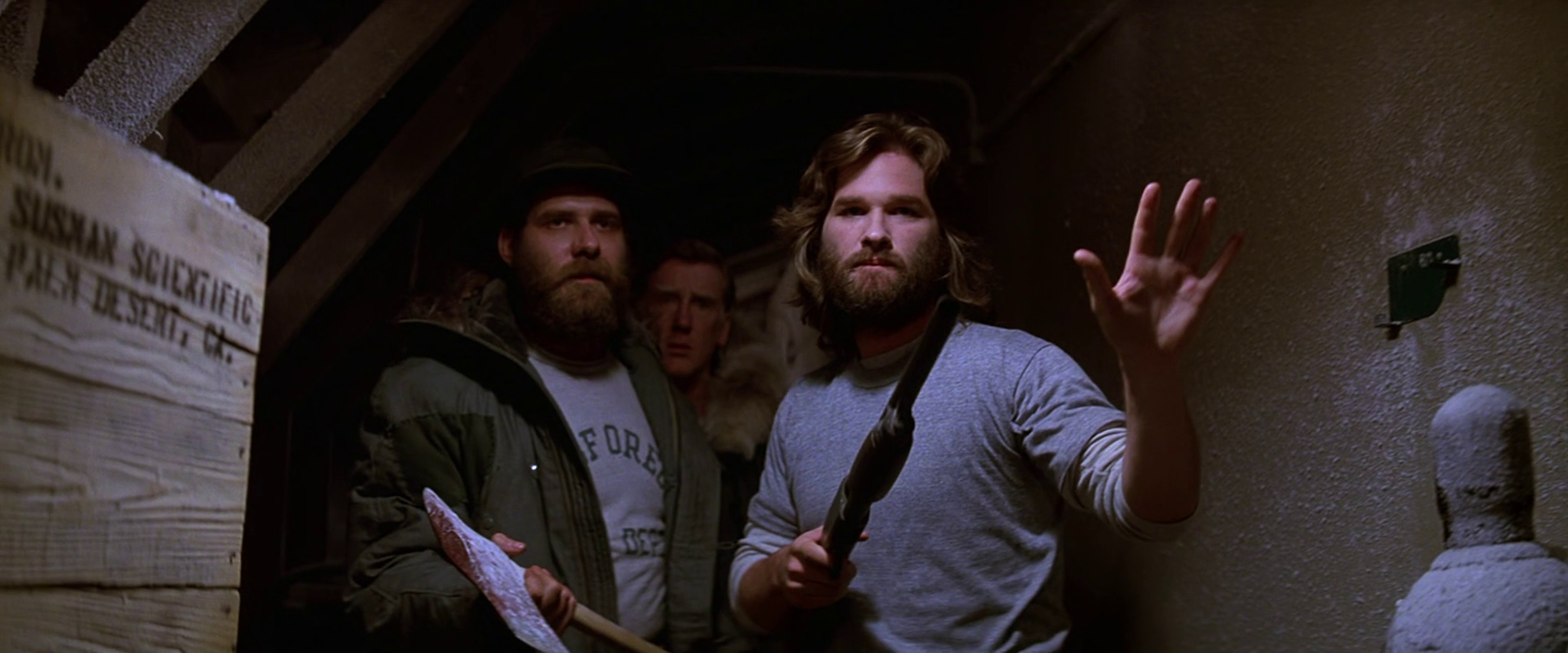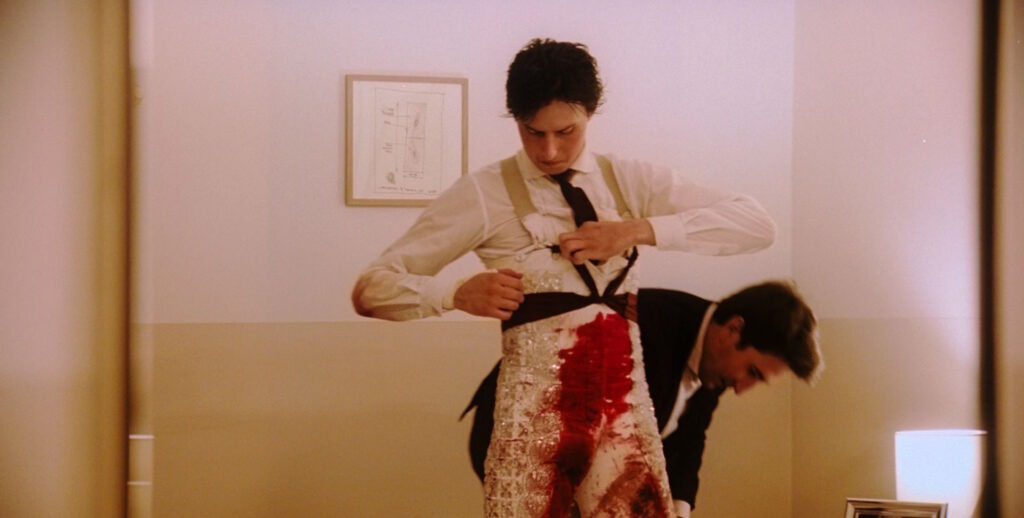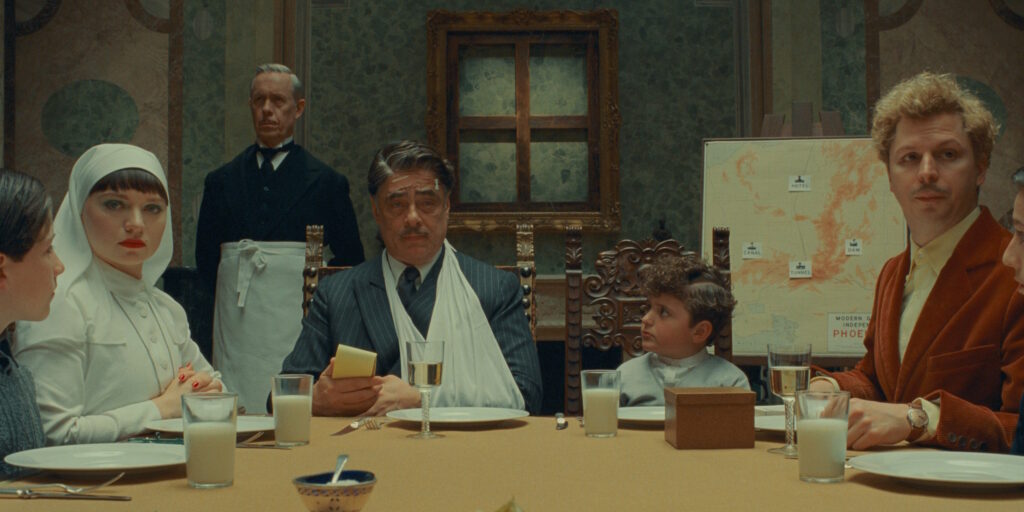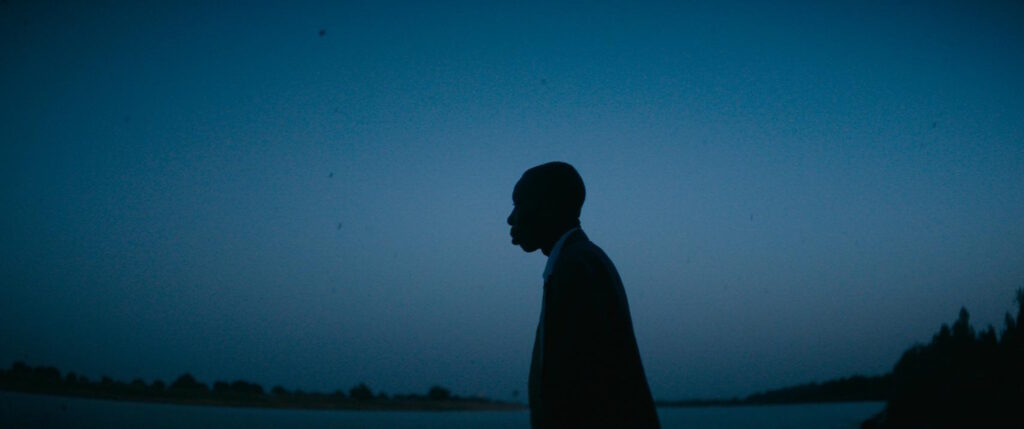[Note: An earlier version of this article was originally published at Cinema St. Louis’ The Lens.]
In a 1999 Film Comment piece celebrating John Carpenter, the director memorably quipped to Kent Jones: “In France, I’m an auteur; in Germany, a filmmaker; in Britain; a genre film director; and, in the U.S.A., a bum.” After 20 years, it could be said that America has finally caught up with France, at least in this regard. Although he hasn’t made a feature film since 2010’s The Ward, the “Prince of Darkness” and his style have surfed a wave of nostalgia to attain a new prominence in the 2010s. Carpenter is currently on a world tour showcasing his trademark synthesizer scores; he has released two Lost Themes albums to moderate critical acclaim; and his fingerprints are all over contemporary genre film making as far-reaching as the Duffer Brothers’ Netflix phenomenon Stranger Things and notable art-horror films such as David Mitchell’s It Follows (2015) and Jennifer Kent’s The Babadook (2014). The horror master has recently produced and scored director David Gordon Green’s Halloween (2018), the next installment in a Carpenter-birthed franchise as undying as its masked, malevolent Shape, Michael Myers.
However, it’s Carpenter’s cinematic work as a director that is ultimately worth revisiting, recontextualizing, and reevaluating. The filmmaker has asserted that he draws from two wildly disparate filmmakers in critic Andrew Sarris’ pantheon: Howard Hawks and Alfred Hitchcock. Although a mixture of those directors’ unique visual languages and thematic preoccupations might seem an unsettled thing, their heir apparent long ago cracked the underlying mutant chemistry. Carpenter retains the perfection of Hawks’ unadorned and unfussy genre cinema to examine people in their communal environments, while also deploying the Master of Suspense’s moralistic and downright experimental formalism to explore humanity in extremis. This marriage finds itself beautifully sprawled across Carpenter’s trademark widescreen Panavision images – a horizontally stretched fisheye viewpoint that demands exacting composition and worldbuilding from the director. Almost all of his works employ this technology-cum-aesthetic – save for his made-for-television work, his debut feature Dark Star (1974), and The Ward (2010) – and even his worst films contain images of stunning confidence.
22. Ghosts of Mars (2007)
The occasionally compelling Ghost of Mars demonstrates the law of diminishing returns. Palpably divested of the charm or character of Carpenter’s previous Rio Bravo (1959) riffs – Assault on Precinct 13 (1976), this is not – this ersatz rendition is a film in search of a point. Even with a bigger budget to realize the science-fiction veneer on the material, the film doesn’t hang together as a whole. (Perhaps illustrating that imitation is indeed flattery, Rio Bravo‘s own director, Carpenter hero Howard Hawks, attempted to retool his classic Western to mixed results in his later works El Dorado [1966] and Rio Lobo [1970].) Ghosts‘ tedious, gory action demonstrates the unfortunate dulling of Carpenter’s cinematic edge, while the B-list cast (Natasha Henstridge, Ice Cube, Jason Statham) mirrors the director’s near-boredom with the film’s space-horror nonsense. Still, the film’s sociopolitical exploration of group dynamics – ever-present in the director’s oeuvre – provides some engaging ideas, especially in its reversing gender and sexual-orientation norms to explore how cishet male characters behave when they’re in the minority.
27. Elvis (7979)
Having just wrapped production on Halloween (1978), Carpenter took the helm of this made-for-television biopic without knowing the cultural and financial cachet his slasher flick would soon afford him. The director’s usual supreme control over blocking and composition are present in Elvis, but the miniseries’ script is DOA hagiography. The storybook presentation works when it covers the King’s early years, but as the narrative creeps achingly slowly into his adulthood, the style wears paper-thin. The film’s nuance-lacking plotting and characterizations are so elementary that it feels like a template for future, equally mundane musician biopics like Walk the Line (2005) and Ray (2004). Kurt Russell nails his impersonation of Presley, but it would be future teamings with Carpenter that would give the actor his most indelible and swaggering performances.
20. “Cigarette Burns” (2005) / “Pro-Life” (2006)
Showtime’s Masters of Horror series was a second chance for many of Carpenter’s genre brethren – Dario Argento, Tobe Hooper, and Stuart Gordon, to name a few – to create new work on a small scale and thereby re-introduce themselves. Carpenter, arguably the most recognizable name of the group, seized the opportunity himself after spending four years in the creative wilderness. With “Cigarette Burns” and “Pro-Life,” the director wastes no time in presenting an increasingly cynical worldview – one without the careful contemplation of people and their habitats and containing even more bloodletting than ever before. “Pro-Life” is the more “fun” of the two, combining the hot-box setting of Assault on Precinct 13 with Roman Polanski’s Rosemary’s Baby (1968), contemporary political paranoia in tow. Similar to Sutter Cane’s novels in In the Mouth of Madness (1995), “Cigarette Burns” centers on a lost French film that serves as a gateway for evil. Thanks to its meta-movie narrative, the episode gets a lot of love from Masters of Horror fans, but it’s one of the most needlessly gory, unrelenting, and dumbest works in Carpenter’s filmography.
19. Body Bags (1993)
Made for Showtime as the seed for an unrealized anthology series, Body Bags is a largely tossed-off affair for its two directors, Carpenter and his contemporary Tobe Hooper (The Texas Chain Saw Massacre [1974]). Carpenter contributes not only by directing “The Gas Station” and “Hair,” but also appearing onscreen as the segment presenter, a devilishly perverse morgue attendant. “Hair” is by far the lesser of his two shorts (and, really, all three), with Stacy Keach as a middle-aged yuppie who finds a dangerous solution to his receding hairline. A visually and thematically stale opportunity to present some stomach-churning special effects, this segment is particularly disappointing when paired with the return to slasher territory that is “The Gas Station.” Someone’s Watching Me! (1978) and Halloween in miniature, the latter segment borrows equally from those earlier Carpenter films. Anne’s (Alex Datcher) first night working at a filling station just off a desolate highway presents her with a cavalcade of moronic and skeezy male customers, including a possible serial killer on the loose. If “Hair” is a bad extended joke about fragile masculinity, “The Gas Station” is a superior metaphor about the leering male gaze and its owners’ micro- and macro-aggressions.
18. Dark Star (1974)
As odd as a beach-ball puppet made to look like a space alien, the charmingly off-kilter Dark Star is Carpenter with training wheels – an opportunity for him to freely experiment with camera placement and movement and to create his first incredibly detailed environment in which he and his players can roam. Equal parts Arthur C. Clarke and Monty Python, Carpenter’s debut feature – co-created with Dan O’Bannon, writer of Alien (1979) – probably would have gone the way of most student films if it weren’t for its pedigree.
17. The Ward (2010)
Carpenter hasn’t exhibited the steep quality decline in his late work that has afflicted Italian horror maestro Dario Argento over the past two decades. He also hasn’t been as prolific, which makes the more enticing aspects of The Ward disappointing, considering its gestation time. No, this as-of-now last feature for the American filmmaker doesn’t reach the highs of his earlier work, but it is nevertheless a sturdy “haunted house” asylum thriller, and the director once again dips a toe into imbalanced gender power dynamics. It lacks any real depth, however, devoid of the Hawksian exploration of the group that became a Carpenter trademark. Instead, it more closely resembles a cheap, William Castle-style spook-fest made by an analog master exploring his new, unfamiliar digital toys.
16. Vampires (1998)
Carpenter’s nastiest concoction before “Cigarette Burns” only a few years later, Vampires is also the closest the director has come to making an actual Western. Everyone’s favorite conservative Twitter bots, James Wood and Daniel Baldwin, star as bounty hunters-cum-vampire slayers who roam the Southwest attempting to save the world from eternal damnation via bloodsucker. The rich desert landscape is expertly mined for near-apocalyptic ends, and its opening – a film-in-miniature a la Sergio Leone’s Once Upon a Time in the West (1968) – is promisingly well mounted. Save for other occasional moments of visual splendor and the appearance of the sublime Sheryl Lee, however, this gorefest is largely a laborious journey. It’s a death rattle of a film and a final grasp at relevancy before the rock-bottom that is Ghosts of Mars.
15. Memoirs of an Invisible Man (1992)
Ostensibly a for-hire work, Memoirs of an Invisible Man is Carpenter’s North by Northwest (1959), a cross-country “wrong man” thriller with its own inventive set pieces and blond romantic foil (Daryl Hannah). Unfortunately, star Chevy Chase is not Cary Grant, and while Chase’s well-publicized smarm works in step with the director’s condemnation of yuppie culture, the performer’s inability to
balance that with likeability undermines the film’s central romance. Although at times Memoirs feels like it exists solely to exploit nascent computer-generated special-effects technology, the calibration and execution of the film is prime Carpenter. Shifting perspectives from its lead’s state of confusion to the objective view of the director’s cinematic eye allows Carpenter to comment on an element of his exacting visual style: the precision in choosing what to include or exclude in
his immersive widescreen frame.
14. Village of the Damned (1995)
Village of the Damned is a litmus test for an audience unacquainted with Carpenter’s melodramatic high style. In every aspect of the film – from its turned-up-to-11 performances, to its unnatural computer-generated effects, to its radical compression of time – the director doesn’t hold back in pushing Village to extremes. Any style removed from its era takes on a sheen of camp for a viewer without a working knowledge of that time, but Village might have seemed hokey to an audience even in 1995. The film is, indeed, a reworking of a 1960 cult hit of the same name about an immaculately conceived brood of psychic aliens. Updated with notions of populist conformity, a condemnation of the nuclear family, and hints of gender role critique, the wildly uneven Village would make for an off-putting first and last stop for those uninitiated with Carpenter. For others, it makes for a fun diversion.
13. Someone’s Watching Me! (1978)
Sure, the of-its-era title is corny, but Someone’s Watching Me! emerges as a metajoke about voyeurism and cinema. Lauren Hutton is the “Me,” a verbose, quirky television director new to Los Angeles. The “Someone” is a peeping Tom terrorizing her from a dueling high-rise building across the street. However, given that Carpenter privileges the audience with this information early in his television feature, they take on the role of the “Someone,” too. This isn’t particularly new territory for the genre – Michael Powell unleashed his camera-as-weapon thriller Peeping Tom 18 years earlier – but Carpenter relishes the opportunity to explore the limits of vision and audience complicity. Elements of the mise-en-scene betray the film’s cheap television-production mode, but the deft direction makes this portrait of sexualized violence against a woman all the more palpable and empathy-inducing.
11 – 12. Escape from New York (1981) / Escape from L.A. (1996)
It might be considered heresy to attribute the much-maligned Escape from L.A. with the same level of greatness as its predecessor. They are, however, equally good versions of the same film, albeit for different reasons. Escape from New York itself is the logical extension of the murky waters Carpenter waded through in Assault on Precinct 13, carrying the earlier film’s moral complexities into a dystopic future and deepening the divide between the powerful and powerless. This trash-infested, more fantastical vision presents a more expansive worldview that doubles down on its film maker’s mistrust of authority, depicting the moral currency exchanged in order to keep its criminal ecosystem alive. Elegantly structured and shot, even New York‘s more leaden passages can be forgiven due to the doses of pure adrenaline it more often than not provides.
Carpenter’s “sequel” is the grimy rave-up remix of his original post-punk cult classic, utilizing almost exactly the same plot mechanics and structure. Therefore, L.A. could be seen as a cynical joke on the cynical riff: Years later, not only is the system still rigged, but it’s gotten even worse. This Escape is even more over-the-top than its predecessor, but sublimely so, ratcheting up the action to the point of abstraction and reaching higher highs along with its unfortunately dated lows. To the benefit of both films, at the explosive heart of everything is capable anti-hero Snake Plissken, brought to iconic realization with equal parts repugnancy and enviable cool by the inimitable Kurt Russell.
10. Big Trouble in Little China (1986)
The legacy of Big Trouble in Little China is fraught with accusations of cultural appropriation, stereotyping, and racism. The film is hardly defensible as a satire about the white person’s view of Chinese-Americans – it does contain multitudes of regurgitated cultural falsities covering the narrow spectrum from the Good Asian to the Bad Asian. The key to this joyful mess of a movie is the audience’s role in vaulting Jack Burton (Russell) to a heroic position, ignoring the fact that the white, largely hapless goon is there merely as an entry point into the utterly insane fantasia Carpenter has manufactured. Culled from Shaw Bros. kung-fu films of the 1970s, classic comic books, and ancient myths, Carpenter rightfully invited his largely Asian cast to join him in rendering their own cultural fantasies in an act of righteous re-appropriation.
9. In the Mouth of Madness (1994)
Carpenter’s supposed paean to H.P. Lovecraft is actually closer to the Hitchcock parody-cum-homage of Mel Brooks’ High Anxiety (1977). Insurance investigator John Trent (Sam Neil) and his gal Friday, literary agent Linda Styles (Julie Carmen), enter the “fictional” town of Hobb’s End to find missing horror-fiction phenomenon Sutter Cane (Jurgen Prochnow). In the process, they endure a litany of monstrosities that allow the director to work himself up in a fan boy frenzy, deliriously dishing out New England horror tropes like a kid in a Stephen King-themed candy store. What Carpenter is truly after, however, is Lovecraft’s philosophical determinism. The flashback framing device not only recalls the aforementioned Maine novelist’s work but also that of film noir classic Double lndemnity (1944). Trent is the in-over-his-head fall guy here, analogous to lndemnity‘s Walter Neff (Fred MacMurray). That makes Carpenter – and his meta-stand-in Cane – the Phyllis Dietrichson (Barbara Stanwyck) of this con, pulling an already-doomed goon’s strings to his inevitable end. With this, Carpenter’s dissection of authorship – and therefore auteurism – affords him the opportunity to indict himself as the perpetrator of trauma a la Dario Argento in Tenebre
(1982). What doesn’t work as well is the entanglement of these notions with the critique of cultural monomania and mob mentality- ideas fleshed out better in the equally gonzo They Live (1988).
8. Prince of Darkness (1987)
Prince of Darkness owes much more to Howard Hawks – and Christian Nyby’s, according to the credits – The Thing from Another World (1951) than to Carpenter’s direct 1982 remake of that film. Hawks’ feature is a contemplative and talky affair, focusing on the interpersonal and professional relationships of an Antarctic base camp where alien visitors run amok. Similarly, Prince collects a
group of physicists, linguists, and theologians in a long-abandoned church to figure out just what the hell is in a Lovecraftian gold-and-glass cylinder filled with gravity-defying green goo. To some viewers, the college-dorm-room discussions about metaphysics and spirituality might wear thin over the course of the film, but they’re always in service of characters who are facing down oblivion. In fact, Prince is imbued with such a great sense of urgency that the film proper can’t help but keep interrupting its own opening credits. By the time Lucifer himself begins to reach into Carpenter’s frame, the director has already manufactured one of his most detailed worlds – aided by eye-popping practical effects that actualize the blurring lines between reality and its sinister underbelly.
7. They Live (1988)
The establishment gave the punks the keys to the city, and after nearly a decade of trying to conform to the establishment’s ideals, one punk turned on his own. Carpenter, at his wit’s end with the Gordon Geckos of the 1980s, ripped down a veil to reveal the insidious nature of American consumerism. Arguably, They Live‘s central metaphor becomes as bludgeoning as its notoriously protracted alleyway fistfight – the film squeezes every last drop of comedy from its truthtelling X-ray sunglasses – but this woke cultural object is still as deliriously fun as they come. Casting wrestler Roddy Piper as the lead was the director’s first middle finger to mainstream convention, but Carpenter also relishes the opportunity to hold the other one up to his audience – the sleeping masses lapping this crap up. Thirty years’ time has revealed that Carpenter’s warning was not heeded. Everyone has the sunglasses now, but unfortunately large swaths of the public have merely come to “chew bubblegum and kick ass.”
6. Christine (1983)
Christine definitely contains the strains of sexual fetishization for which it’s probably most remembered – Arnie (Keith Gordon) asking the titular vehicular menace to show him what she’s got remains the most brazenly sexual moment in Carpenter’s oeuvre. Exactly what the film is fetishizing is an open question, however. There is some unbreakable bond Christine forms with her owners, but the director is largely concerned with the masculine fixation with Americana and American myths. Slyly using 1950s signposts like early rock ‘n’ roll, Arnie’s James Dean-style glow-up, and the testosterone-driven ethos of teen-rebel flicks of the era, Carpenter equates Arnie’s dangerous and ultimately fatal obsession with post-World War II capitalistic lust for American power and supremacy. Arnie is a victim of a system that preys on the weak but also forces them to perpetuate its rules in order to gain dominance. Intentional or not, Christine is Marxist to its core, while still retaining an insidious sheen compelling its viewers to root for mayhem and destruction. In its details, however, this underrated Stephen King adaptation – lagging only slightly behind Stanley Kubrick’s The Shining (1980) and Brian De Palma’s Carrie (1976) in greatness – is remarkably forthcoming about both toxic masculinity and male sensitivity, eventually emerging as a heartbreaking parable about addiction and those who are swallowed whole by it.
5. The Fog (1980)
The Fog is distilled from discrete influences synthesized to maximum effect, like a campfire ghost story culled together from the greatest of urban legends. Seaside hamlet Antonio Bay is a direct lift of Bodega Bay from Alfred Hitchcock’s The Birds (1963), not only in their matching coastal terrain but also in the way that both towns’ inhabitants are assaulted by unfathomable forces. The details of the residents’ lives – namely their work and where they fit within a specific ecosystem – resemble the tight-knit communities formed in Hawks’ films, Carpenter’s other perennial cinematic touchstone. While Hitchcock and Hawks’ DNA can be found throughout Carpenter’s filmography, The Fog is distinctive in its debt to the phantasmagorical melodramas of Italian horror master Mario Bava. When the revenge-seeking pirate ghosts drift into town, saturated primary colors mix with the expressionistic chiaroscuro of blinding white lights against utter blackness. These visual schema are a Bava trademark, as is The Fog‘s theme of inherited communal trauma, and Carpenter shapes his parable around America’s original sins – allowing for a faceless mob to righteously settle a century-long score.
4. Assault on Precinct 13 (1976)
The director claims that his first true “Carpenter” film, Assault on Precinct 13, is apolitical. This is not only unequivocally false for Assault, but also for much of his subsequent work. A lean and mean violence machine, this Night of the Living Dead (1968) and Rio Bravo mashup places its audience squarely in the heart of darkness that is racial politics in the United States. The escalation of gunfire and blood between the police and a Los Angeles “gang” may have ambiguous origins, but the film proper begins with a racially diverse group of civilians being mowed down at the hands of the L.A.P.D. – a chilling moment that reverberates throughout the film and within the history of the country.
In describing it as “apolitical,” Carpenter may be pointing towards his mostly distanced eye that leaves the viewer to question the film’s moral and political ambiguities. The director tips his hand, however, when the previously absent police discover the survivors of the night in the precinct station from hell. The conflicted black cop (Austin Stoker) and his two white cohorts (Laurie Zimmer and Darwin Joston) have abandoned their socio-political stations in a fight for survival, and a shot lingers on them as they stare blankly at the policemen; the system in place to protect and serve did anything but.
3. Starman (1984)
Starman has earned a footnote in the Carpenter filmography as being the only film of the genre-oriented master to earn awards acclaim. Jeff Bridges garnered a deserved Best Actor Oscar nomination for playing the titular character, a role that requires the actor to physicalize both alien nothingness and transcendent human compassion. The recognition reaped by this almost Spielbergian heart-breaker shouldn’t come as a shock. By skimming Carpenter’s oeuvre, it’s entirely possible to miss the fact that, at its best, his work is deeply humane. His cinematic apparatus is always keenly aligned to maximize the effect his images have on their viewers, and Starman, like all his greatest stories, is concerned with complexities of people and their mortality, spirituality, and aching to belong.
Yet the cult following that most of the Carpenter greats have attained over time has eluded this mournful and giving film. This might be attributable to the economy with which the director sketches his characters, which could be mistaken for sentimentality. A simple shot introducing the widow Jenny (Karen Allen) as she watches 8mm home movies of her and her deceased husband packs the same emotional wallop of the much-lauded prologue in Pete Docter’s Up (2009), and its compression of the alien both learning and teaching humanity from E. T.: The Extra-Terrestrial (1982) is far more efficient and affecting here. Tightly constructed around typical genre movements – the comedy of behavioral errors, the cross-country chase, and the inevitable blossoming romance – Starman magically repurposes them to perfection, creating a unique and swoonworthy portrait of humankind’s greatest qualities: mercy and empathy.
2. Halloween (1978)
If Starman is about the ultimate good in humanity and The Thing is about the complete dearth of it, then Halloween is perfectly situated as that spectrum’s midpoint. Carpenter’s breakout depicts the battle between good and evil in their purest forms, a conflict so elemental that it arguably created the blueprint for every horror film that followed it. Not to diminish that (un-)holy trinity of modern American horror – Psycho (1960), Night of the Living Dead, and The Texas Chainsaw Massacre – but Halloween‘s imitators are arguably much greater in number, largely due to its narrative elegance and deceptive simplicity. It’s perhaps a fool’s errand to compare such disparate, masterful films, but
Halloween has an influence advantage in bringing its savage monster into a much more relatable framework than does its predecessors.
It isn’t simply that Laurie Strode (Jamie Lee Curtis) and her fellow babysitters are in the midst of a common American experience: high school and all of its inherent sexual and political horrors. It’s the specificity of their characters and their mundane existences being torn asunder that create close identification with them. Halloween is sometimes cited as dictating the rules for subsequent slasher flicks – the Untouchable Virgin and the Final Girl, for example – but such codification was really the business of the film’s sub-par imposters, which missed the point of Carpenter’s feature altogether. There are no rules in Halloween. As rigid and exacting as Carpenter’s compositions and storytelling can be, they still allow for the chaotic unknowable, turning something as “traditional” as trick-or-treating into an act of adrenaline-fueled self-survival against an unstoppable being that knows only one commandment: Thou Shalt Kill.
1. The Thing (1982)
As marketing titles go, John Carpenter’s The Thing is one of the more obvious in Hollywood’s history. As efficient and ambiguous as the film itself, the title also gives appropriate ownership to the adapter of Hawke’s 1951 Red Scare metaphor, The Thing from Another World (and, by extension, its source material, Robert W. Campbell’s 1938 novella Who Goes There?). Notwithstanding its lineage, the resulting film is wholly Carpenter’s. In fact, The Thing represents the perfection of all the (still relatively new) filmmaker’s preoccupations: political dynamics of the group, humanity’s most basic instincts, dogmatism versus pragmatism, and the capacity of the camera to convey worldviews in flux.
The Thing‘s alien infection in human hosts is so vividly rendered, mutating into uncanny forms sprung forth from the darkest corners of their creator’s subconscious, that the shock and awe of its effects tap into the viewer’s own buried-deep phobias. To that end, the film is subject to myriad readings: Cold War paranoia parable, prescient AIDS-epidemic metaphor, missive to heteromasculinity, or an assault on Reagan-era individualism-centric values. Those metaphors aside, Carpenter’s precise film making behaves just like a live wire to a petri dish, explosively uncovering the extremes to which humans will go for survival. The Thing is a barn-burner of a masterpiece that transcends its cult following as a humane work of art, worthy of endless study no matter what shape that takes.




